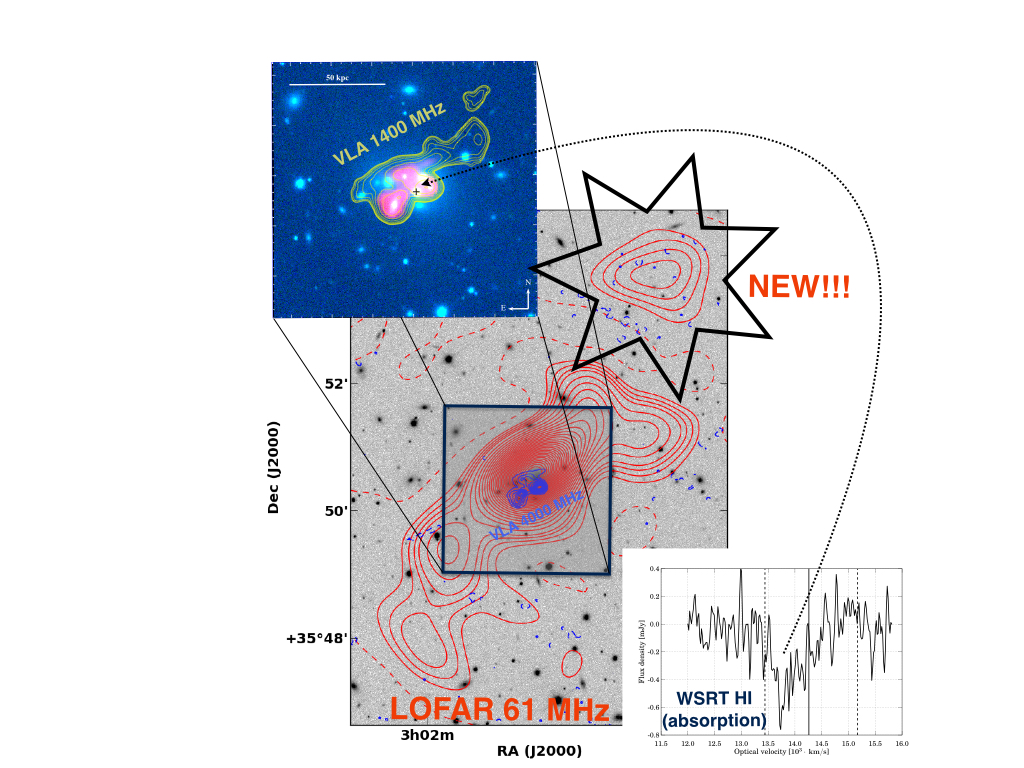Daily Image
06-05-2015The restarted radio galaxy 4C 35.06 as seen by LOFAR
| Submitter: | Aleksandar Shulevski |
| Description: | One of the goals of low-frequency radio observations (and, therefore, of LOFAR) was to unveil low surface brightness, relic radio emission from old electrons. The relevance of this is that it allows to reconstruct the life and the age of a radio source. This is key information if we want to understand what switches on and what switches off this kind of object. 4C 35.06 is an intriguing radio source hosted by one of the cores in the cD galaxy UGC 2489 at the heart of the galaxy cluster Abell 407. It has a complicated history of nuclear activity, reflected in its radio morphology on different spatial scales. We observe twin radio lobes surrounding the optical cores, seen in high-resolution archival VLA images (yellow contours, upper left inset, blue contours, center). A ridge of emission to the north-east of the inner lobes extends out to larger distances from the active nucleus. We have observed the source using LOFAR (60 MHz, LBA), with the highest resolution achieved to date at these low frequencies and have detected the steeper spectrum large-scale emission. The presence of faint radio emission at more than 200 kpc from the nucleus is now clearly seen for the first time (upper right). Complementary observations using the WSRT have shonw that the source has a helical morphology extending outwards, probably a remnant from past activity. Again using the WSRT, we have also observed the presence of HI at the location of the active core (the spectral profile is shown in the lower right inset). Spectral index maps highlight the distinction between the extended steep spectrum emission and the inner, more recent AGN outburst. The integrated radio spectral properties of such restarted sources hold clues about the activity history of the AGN. By studying objects like these which are nearby, we can calibrate our methods for studying higher redshift, unresolved radio galaxies and ascertain their life cycles as well. This work represents one of the chapters of the PhD thesis of Aleksandar Shulevski and is now accepted for publication in A&A. Shulevski, Morganti, Barthel et al. (including the LOFAR builders list). Preprint: http://arxiv.org/abs/1504.06642 |
| Copyright: | Astron |
| Tweet |  |
